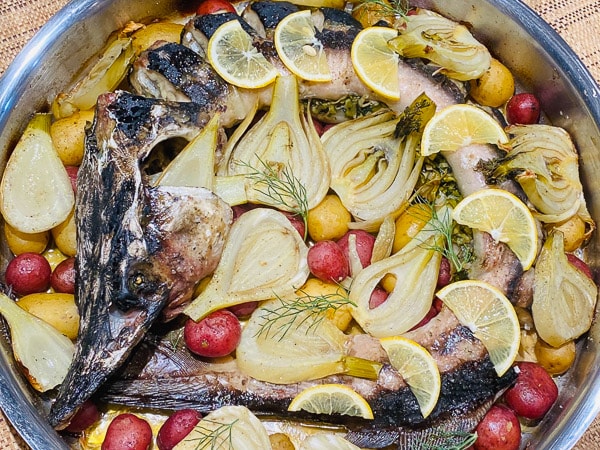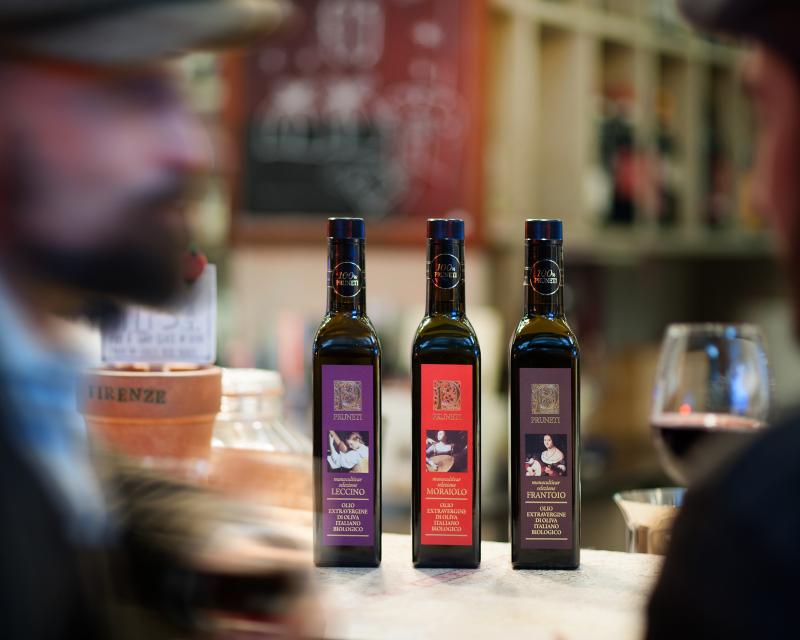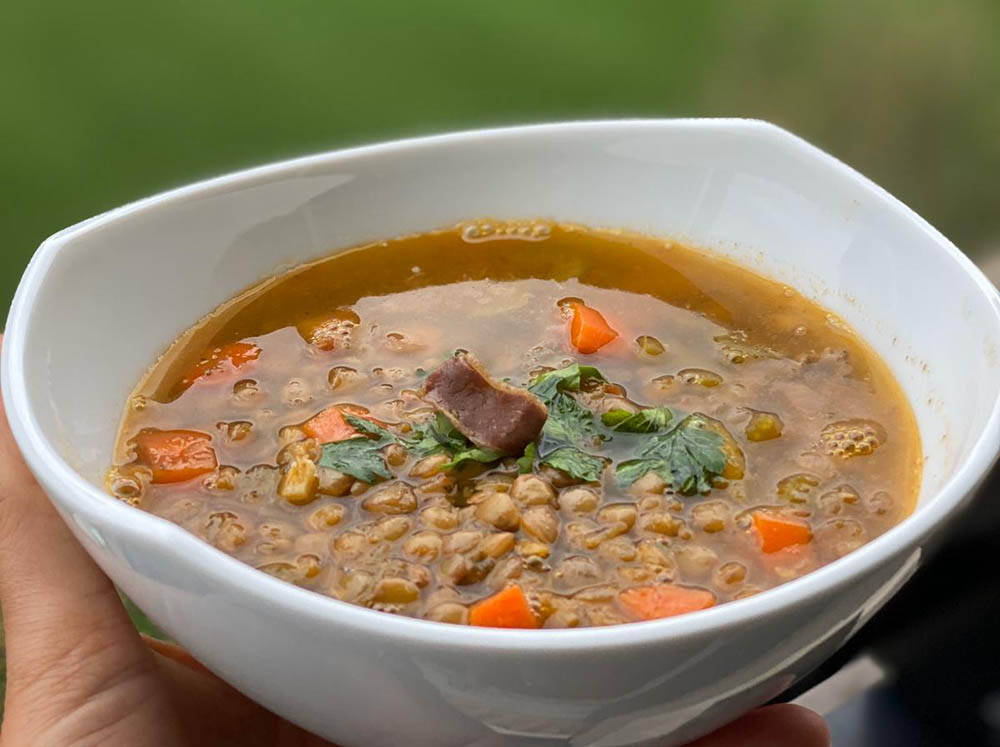The Art of Brining: Elevating Flavor and Moisture in Your Meats
For home cooks, barbecue enthusiasts, and traditional cooking aficionados, brining stands as an ancient yet deeply rewarding culinary technique. As we explore this time-honored tradition, you'll discover that brining offers more than just a splash of seasoning; it's a slow dance of osmotic science and taste bud alchemy that can transform your meats into succulent masterpieces.
Understanding Brining
The Purpose of Brining
At its core, brining is a process that involves soaking meats in a solution of salt and water to enhance their flavor, tenderness, and moisture content. The salt dissolves in the water, creating a brine that infuses proteins with succulence and creatures a controlled environment for osmotic exchange to occur.
The Science Behind Brining
This exchange, known as osmosis, occurs when the salt and water content in the brine seek equilibrium with the fluids in the meat’s cells. During this exchange, water moves into the cells, effectively plumping them up from the inside out. Furthermore, aromatics in the brine can permeate the meat, creating a depth of flavor impossible to achieve with mere surface seasonings.
Benefits of Brining
Improved Moisture Retention
Brining leads to significantly improved moisture retention, reducing the likelihood of dryness that often plagues meats, especially lean cuts or poultry.
Enhanced Flavor Profile
The taste that brining imparts is not merely salty; the osmotic exchange allows for a layering of flavors, from herbs to spices, that deeply infuse the meat.
Tenderizing Effect
Brining doesn't just preserve moisture; it also tenderizes by preventing proteins from bonding too tightly, leading to a more tender texture.
Types of Brines and Ingredients
Wet Brine vs. Dry Brine
A wet brine is a solution of water and salt, often with sugar and spices, whereas a dry brine typically involves a salt and spice rub directly onto meat. Both processes yield superb results, and their choice often depends on the type of meat and desired outcome.
Common Brine Ingredients and Their Roles
Beyond salt and sugar, brines can include herbs, citrus, and aromatics, each playing a role in crafting the final flavor and texture.
Brining Techniques
Brining Duration and Meat Selection
The length of brining is critical and varies by meat type. For instance, a whole turkey may require a few days, whereas fish may need only 30 minutes. Understanding the composition of the meat will guide you in the ideal brining time.
Brine Preparation Methods: Ratios and Flavors
Creating a perfect brine involves the right balance. A basic solution is about 1 cup of salt and 1 cup of sugar per gallon of water, with the potential addition of spices, herbs, and even alcohol. The type of brine and its strength in flavor components depend on the recipe and your personal penchant.
Brine Recipes and Tips
Basic Brine Recipes
Consider these starting points for your culinary exploration:
Basic Poultry Brine Recipe
A classic mix of water, salt, sugar, and seasonal herbs like thyme, rosemary, and sage.
For a simple yet effective poultry brine, you'll need:
- 1 gallon of water
- 1 cup kosher salt
- 1/2 cup granulated sugar
- 1/2 cup brown sugar
- 1 tablespoon black peppercorns
- 1 tablespoon allspice berries
- 4 sprigs fresh thyme
- 4 sprigs fresh rosemary
- 4 sprigs fresh sage
- 4 cloves of garlic, crushed
- 2 bay leaves
Instructions:
- In a large pot, combine the water, kosher salt, granulated sugar, and brown sugar.
- Place the pot over medium-high heat and stir until the salt and sugars are fully dissolved.
- Turn off the heat, and add the peppercorns, allspice berries, thyme, rosemary, sage, garlic, and bay leaves.
- Allow the brine to cool completely to room temperature. For faster cooling, you can place the pot in an ice bath.
- Once cooled, submerge your poultry in the brine. Make sure it's fully immersed.
- Cover and refrigerate for the recommended brining time (generally, for a whole chicken, 4-6 hours, and for a full turkey, 24-48 hours).
- After brining, remove the poultry from the brine and discard the brine. Rinse the poultry under cold water to remove excess salt, then pat dry with paper towels.
- Proceed to cook the poultry as desired.
Tips: For a more intense flavor, you can heat the brine along with the herbs, spices, and aromatics to infuse the flavors before cooling it. Always ensure the brine is cool before adding your poultry to avoid the risk of bacterial growth.
Basic Pork Brine Recipe

Utilize apple cider, salt, and brown sugar, with a hint of cinnamon and allspice for a sweet-savory element.
To achieve a tender and flavorful pork dish, the following brine will introduce a balance of sweet and savory notes:
- 1 gallon of apple cider
- 1 cup kosher salt
- 1 cup brown sugar
- 2 cinnamon sticks
- 1 tablespoon allspice berries
- 1 tablespoon mustard seeds
- 1 tablespoon black peppercorns
- 2 bay leaves
- 4 cloves of garlic, crushed
- 1 onion, sliced
- Optional: a small bunch of fresh thyme for an herbal touch
Instructions:
- In a large pot, pour in the apple cider and add the kosher salt and brown sugar.
- Heat over medium-high and stir until the salt and sugar are completely dissolved.
- Bring the mixture to a simmer, then add the cinnamon sticks, allspice berries, mustard seeds, black peppercorns, bay leaves, garlic, and onion.
- Simmer for about 10 minutes to allow the spices to release their flavors, then remove from heat.
- Let the brine cool to room temperature, or speed up the process by placing the pot in an ice bath.
- Once the brine is cooled, immerse the pork fully in the liquid.
- Cover and refrigerate for 12 to 24 hours, depending on the size of the pork cut.
- Before cooking, remove the pork from the brine, discard the liquid, and rinse the meat under cold water. Pat dry with paper towels.
Tips: For smaller cuts of pork like chops, a brining time of 6-12 hours is usually sufficient. Adding thyme or other fresh herbs to the brine can provide an extra layer of flavor. Always ensure the pork is thoroughly cooked to the appropriate internal temperature based on the cut and size.
Basic Seafood Brine Recipe

A light brine of lemon-infused water can work wonders, with a pinch of peppercorns and a bay leaf to complete the composition. For delicate seafood, a subtle brine can enhance moisture without overpowering its natural flavor. Here's a simple yet effective recipe for a light seafood brine:
- 4 cups of water
- 1/4 cup kosher salt
- 1/4 cup sugar
- 1 lemon, sliced
- 1 teaspoon black peppercorns
- 1 bay leaf
- Optional: fresh dill or parsley for added herbaceous notes
Instructions:
- In a bowl, whisk together the water, kosher salt, and sugar until fully dissolved.
- Add the lemon slices, black peppercorns, and bay leaf to the mixture.
- For additional flavor, include a sprig of fresh dill or parsley.
- Place your seafood in a zip-top bag or a non-reactive container.
- Pour the brine over the seafood, ensuring it is completely submerged.
- Seal the bag or cover the container and refrigerate for a short brining period—typically 30 minutes for small fillets or up to 2 hours for larger fish.
- After brining, remove the seafood from the solution and rinse lightly under cold water to eliminate excess salt.
- Pat the seafood dry with paper towels before cooking as desired.
Tips: It's crucial not to over-brine seafood, as it can become overly salty and potentially cook in the acidic environment. The brine ratio and timing are especially important to maintain the delicate texture and flavor of the fish.
Creative Brining Ideas and Flavor Combinations
Once you've mastered the basics, feel free to take your brining to the next level with concoctions ranging from a tangy citrus brine for chicken to a red wine, juniper berry, and rosemary infusion for lamb.
Tips for Successful Brining Outcomes
Consistency is key when it comes to brining. Use a food-grade bucket, brining bag, or large pot to immerse your meat completely. Keep it cold—below 40°F—to thwart bacterial growth, and ensure you rinse the meat thoroughly after brining to avoid an overly salty taste.
To truly explore the expansive flavors of brining, it's essential to start with the best cuts of meat. Marky's Meat Collection offers a selection of the highest quality meats, sourced with the same dedication to excellence found throughout the Marky's brand. From succulent steaks to tender veal, this carefully curated selection provides the canvas for your brining masterpiece.
Conclusion
The art of brining is both a science and a symphony, where time and technique combine to elevate the simplest of ingredients. As you close the lid on your brining vessel and start the countdown, remember that patience and brine are the true seasoning of life's culinary adventures. Share your brining stories and discoveries, and together, we'll celebrate the transformation that a little salt and water can inspire in the world of cuisine.
To unleash this potential and begin your brining odyssey, take the first step with Marky's Meat Collection. Your meats are more than just protein; they are promises of what they can become with brining as your secret weapon. Don't just cook; create. Visit Markys.com to purchase the perfect cut for your first—or next—brining endeavor.






